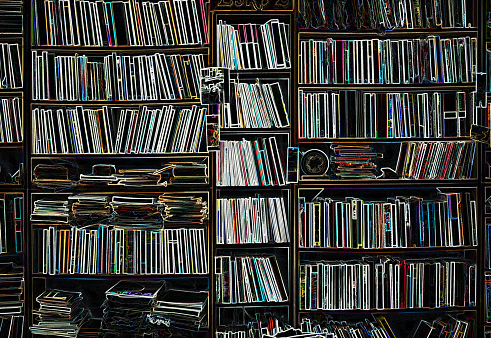
Though it took its first breath in the 1970s, digital humanities didn’t burst to life until the beginning of the millennium with the advent of cheaper bandwidth.
“It’s an emerging field taking traditional approaches of humanities but capitalizing on the technology of more recent years,” said David Kenley, director of Elizabethtown College Center for Global Understanding and Peacemaking and a professor of history. “It’s the difference between writing journals and hosting a podcast,” he said.
Though Matt Skillen, associate professor of English and department chair, distills the definition as “scholars who do all aspects of academia digitally,” the ultimate description is up for grabs.
Its validity and ethics are up for argument, too.
Included in the growing realm of digital humanities is data mining and collection, research, geospatial analysis, research distribution, artifact preservation. “It’s highly academic,” said Skillen, “but you don’t have to travel all the way to Europe to a dusty library to do the research.”
Those libraries, said Sarah Penniman, librarian and director of High Library, are now challenged to explore new ways of approaching research. Surprising to some, she’s all about this efficient approach to understanding and sharing art, literature, history, language, spirituality and music.
Almost immediately, she said, the idea of digital humanities went from intriguing to enormous. “Years ago, my initial impression was that it’s a great way to analyze literature text, like ‘how many times did Shakespeare use this word or that phrase’?”
And it’s a concept that pops up in the most interesting places across campus: Richard Newton’s collection of six-word stories in which Religious Studies students research campuswide self-description; the capture of Tweets via hash tag designation; David Bowne’s GIS mapping tools in Biology; and historic story mapping with Jean-Paul Benowitz.
Wanting to amplify the opportunities for its presence on campus, Skillen and Kenley applied for a portion of a Mellon Grant to create a two-credit course that pulls together students from a variety of disciplines to acquire an understanding of this growing field. That Mellon Grant, received four years ago, and the Mellon Grant the College just landed, have digital humanities as a significant component.
The aforementioned “dusty library” is an important partner in this development, said Skillen. “They are at the forefront of this trend,” he said, “cataloging our artifacts, answering our questions: How do we house and store all of this information?”
Though most discussion about digital humanities is positive and forward thinking, in addition to the concern over the changing role of academic and community libraries, there’s also apprehension about copyrights, intellectual property, loss of income and the opinion that online writing holds less credibility, said Skillen. There’s a bit of “the Luddite fear of the unknown,” added Kenley.
The concern over libraries, said Penniman, is actually a healthy challenge. “This gives us, as a library, an opportunity to rethink everything that we do, including the use of our physical space. Yes; we’ll house fewer printed books, but we can also reach out to participate in digital humanities projects, to further those ideas and conversations, and then continue to help the students with research and the college experience in general. The challenge for libraries is that we still need to curate and manage lots of information” and make it accessible for the long term—streaming music, movies and newspapers are a good example.
Digital humanities in the library—digital subscriptions, newspapers and yearbooks, online archives, and other “remarkable collections that are now searchable online”—is in Penniman’s opinion, a “fabulous opportunity that scholars didn’t have before.”

Jean-Paul Benowitz, director of student transition programs and prestigious scholarships and fellowships, used digital humanities to collaborate with the architectural historian for the Pennsylvania Department of Transportation as his students mapped out already documented historically prominent properties on campus and in the borough.
The story map project was inspired by a proposed rebuild to a significant Market Street bridge. “The bridge fell under the Section 106 Review,” said Benowitz. “There was a need to research the impact to the historical landscape.” Section 106 of the National Historic Preservation Act of 1966, initiated by President Lyndon Johnson, requires consideration of historic preservation in projects with federal involvement and the effects of projects they carry out, approve or fund.
Each of Benowitz’s students formulated a deed search down to the original owner for at least two properties. Some dated as far back as the Penn family. From this research they created story maps—in addition to the geographical location, they include full biographical sketches, topography, images and architectural designs. Business, engineering, history and art students explored the architecture and the industry of the time, the highways and byways that moved people across the state, the technology of the bridge building based on its foundation and load, the politics, religion and economy.
“The Conoy Creek was a major link between Elizabethtown and the Susquehanna,” said Benowitz. “Elizabethtown played an important and political role to get from Philadelphia to westward expansion.”
This information is now available across the world, as are other new ideas and old treasures that can reach a much broader audience.
“We’ve merely scratched the surface where human and computer can come together,” said Skillen. “This in itself is a study of the human experience.”

